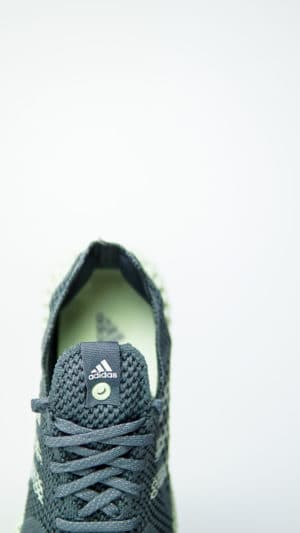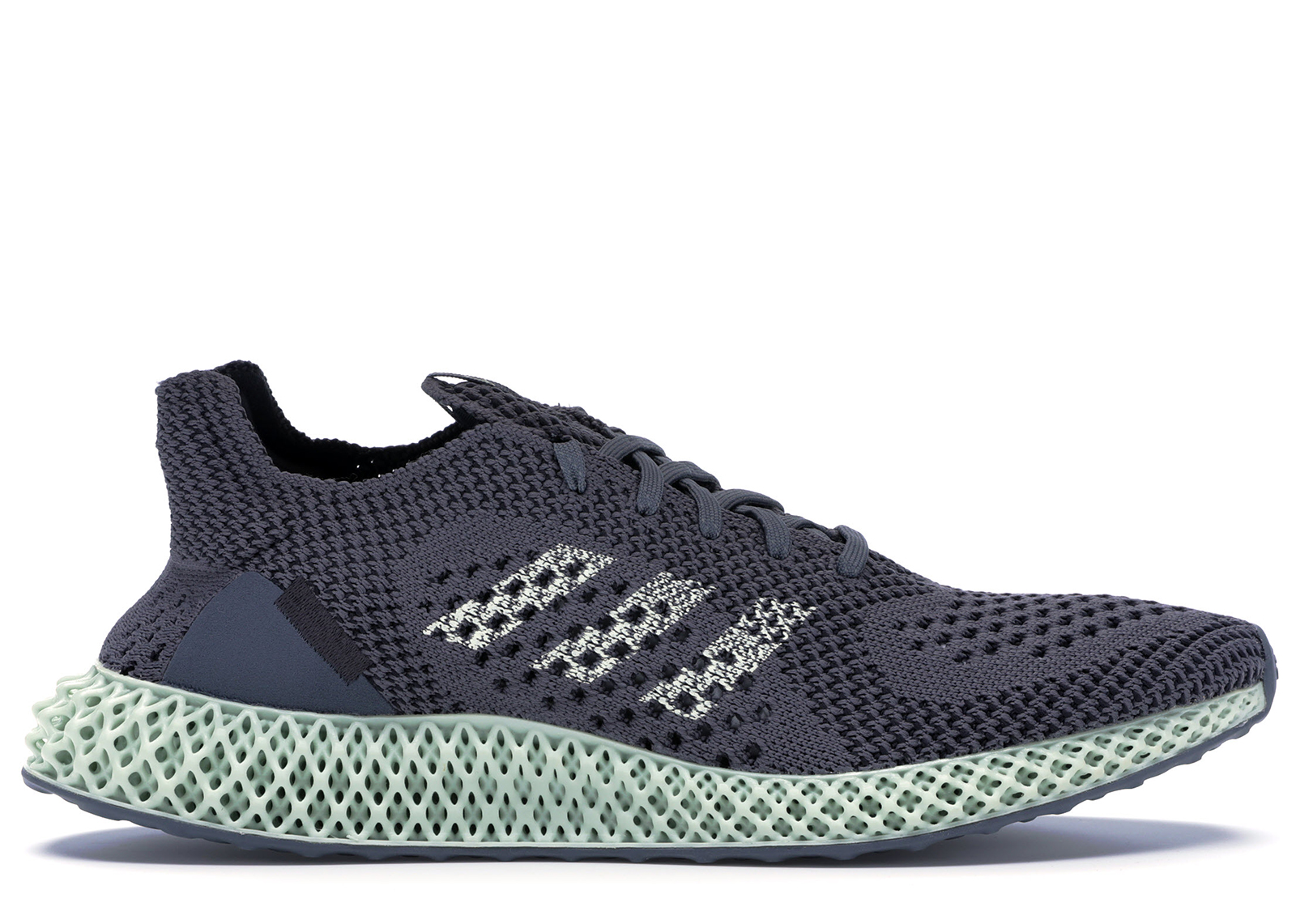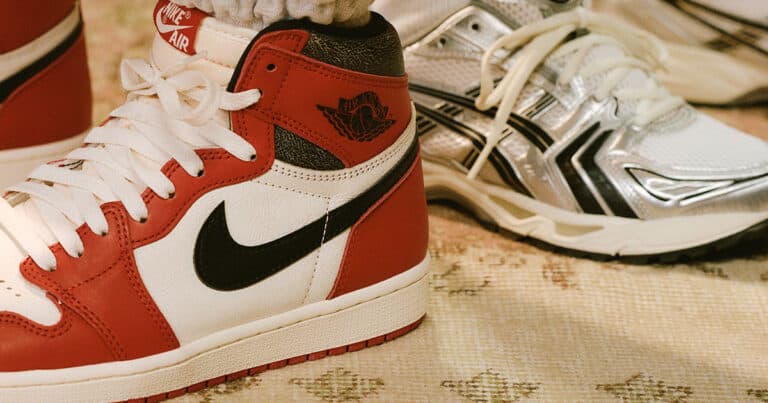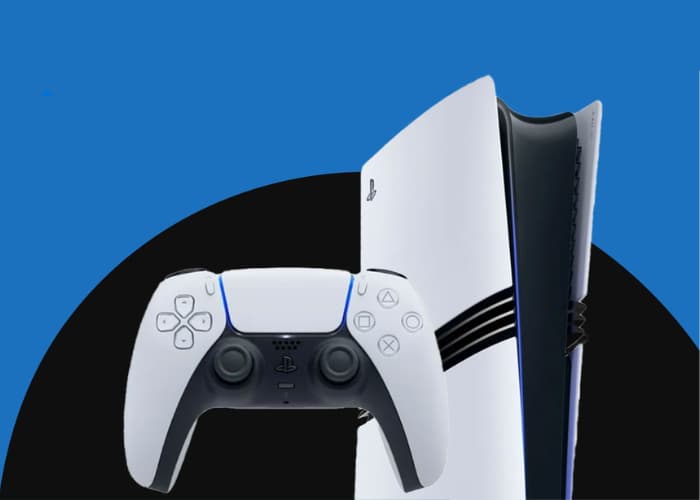Back in January of 2018, we were introduced to yet another newcomer in sneaker innovation: 4D materials, specifically through the adidas Futurecraft 4D in the Ash Green colour-way.

Noticeable by it’s exposed web-like structure, the 4D midsole technology seen on this shoe is produced by California based 3D digital manufacturer, Carbon®. adidas joined forces with their team to produce a new, un-explored method of footwear development through the medium of 3D printed structures. In simple terms, it is made from programmable liquid resins that react to digital light projection, which form the innovative lattice skeleton that give the sneaker its unmistakable look. This technology allowed adidas to create an experience more tailored and responsive than anything currently in their archive, or arguably ever in footwear history. The biggest breakthrough being the ability to produce a midsole that is not only so finely tuned to the human foot, but done within one complete unit, negating the need to produce and connect multiple components that require additional tooling, adhesive solutions, and quality measures. This complete structure is developed using adidas’ entire history of athlete data to, in their own words, “deliver precisely tuned support and cushioning right where you need it.”

After the Futurecraft, Adidas rolled out the 4D tech to other silhouettes, including the Alphaedge, Y-3 Runner, 4D-5923 and ZX4000 as it made its way into the lifestyle category. In its initial release season, retail prices began at $300, but crept up to as much as $600 as it transitioned onto other models and collaborations. And therein lies the mystery with this technology. This ambitious price tag, especially for any new silhouette, has been an over-riding factor, causing for hesitation amongst many sneakerheads. Not to mention the limitation in available sizes as adidas only manufactured some 4D models up to a US 11. The other big question being how 4D compares to Boost technology, and why would the many fans of arguably the most popular sneaker technology of the last four years invest in more tech claiming greater heights of comfort?
To answer all these questions, I took the adidas Futurecraft 4D Onix Aero Green out for another StockX Wear Test, taking into account the concerns and questions from those still reluctant to add a pair to their collection. Here’s what I noticed over 30 days…
Field Notes
Before/After
Cleaning the 4D
One of the trickiest parts about owning a pair of 4D sneakers is cleaning. With how notoriously tough Boost technology is to clean, I figured putting together a handy guide for 4D cleaning may help those who are still hesitant about these crazy comfortable shoes. Just follow these six steps and your 4Ds will be good as new.
|
Final Thoughts
After researching 4D and doing this wear test, I understand and appreciate why the retail price ($450) was/is as high as it is, especially knowing that the manufacturing of the 4D midsole is so complex and lengthy. 4D is like the sophisticated older sister to Boost – Boost is much more squishy, less tailored to the human foot and feels as though its TPU material has a shorter life span as its reactivity loses strength. 4D is an actual support structure with higher density consciously manufactured into the key areas. It is a much more technical and measurable material. Although, I can’t imagine the AlphaEdge or ZX4000 to perform quite as well – the knitted construction is so complimentary to the 4D midsole and pushes this silhouette into ‘undeniably impressive’. Also it should be noted that the Futurecraft 4D is made for runners so expect the wearing in process to take longer for casual use. So if you’re copping know this:
- Runs true to size
- A perfect summer shoe with incredible breathability
- Not recommended for use in wet weather
But is the future of adidas clearly tied to 4D? With one midsole taking 40 minutes to be produced, 30% less than when the project first started, it is a substantial process compared to other materials and manufacturing processes for the brand. I really hope it can continue to be refined to extend the production of such an impressive technology in the footwear market. The 4D midsole is something athletes and sneakerheads alike should have the experience of, especially given the further capabilities to provide every person with a bespoke pair that’s tailored to the users exact physiological data.
Personally, it’s not an amount I can justify as I’m not a regular runner or someone who dresses to this aesthetic on a daily basis. That being said, you will NOT be disappointed if you do decide to grab
This was a very enjoyable 30 days. And yes, it’s better than Boost.







































